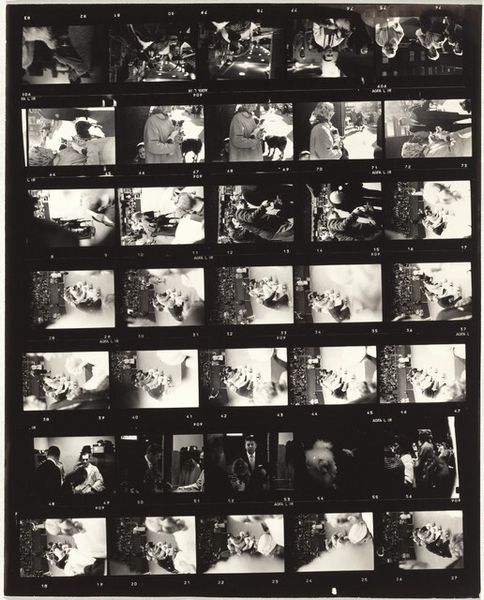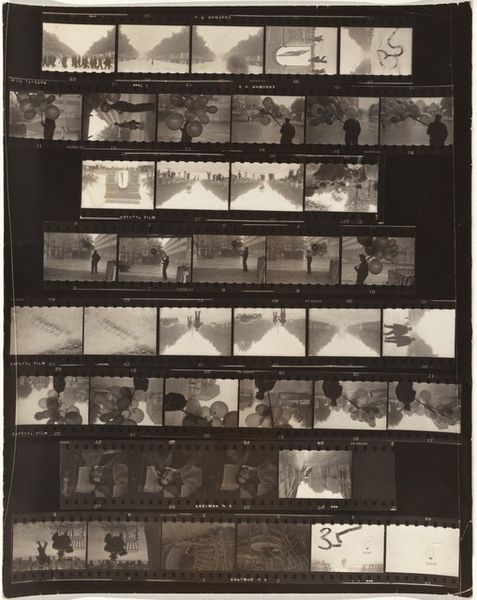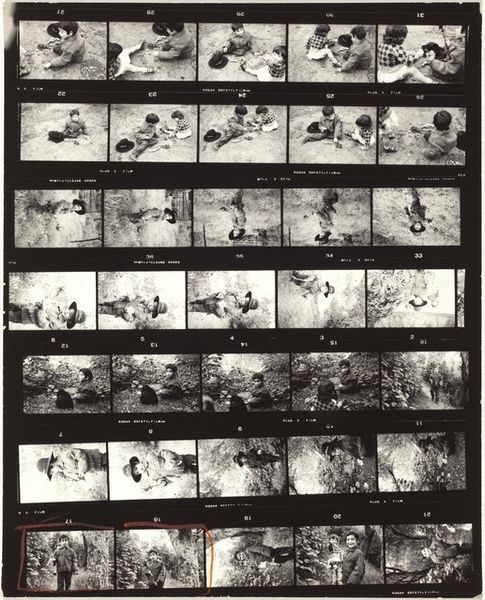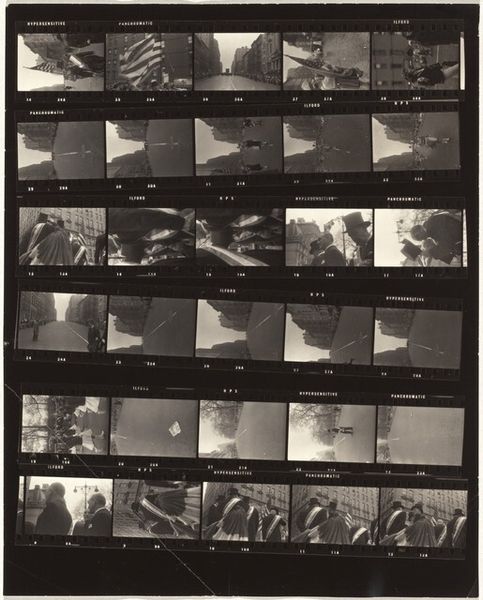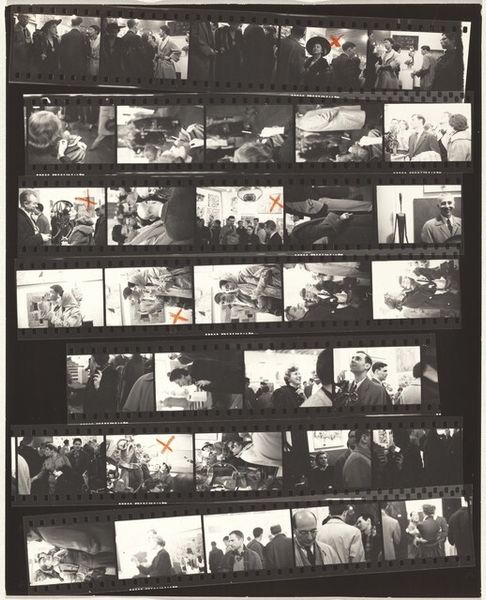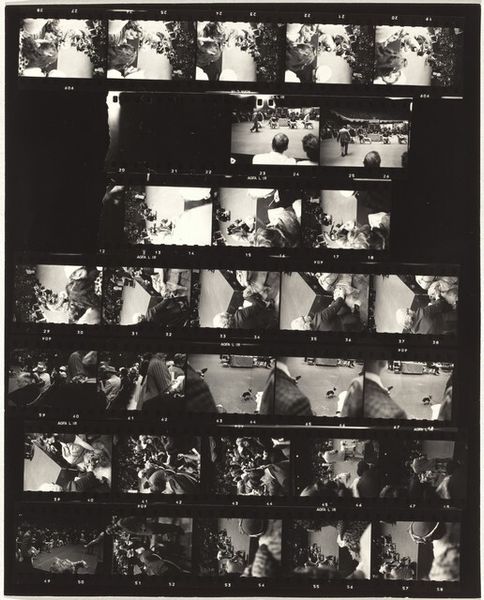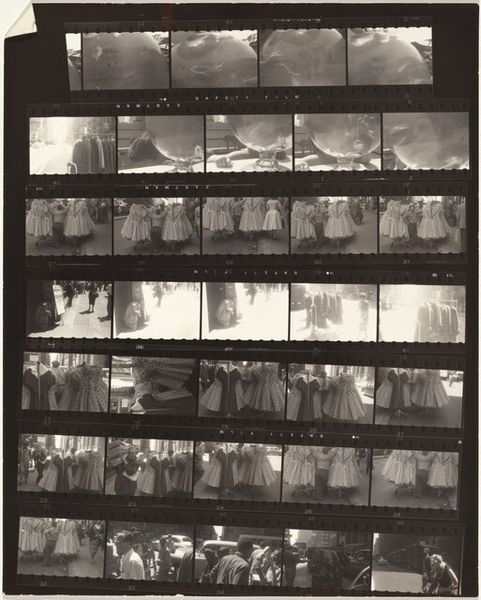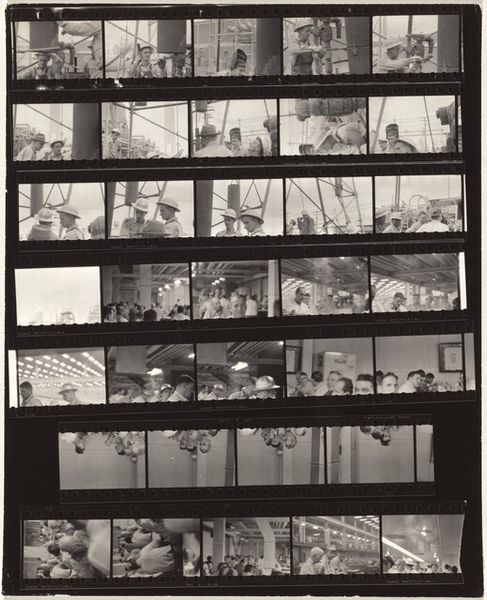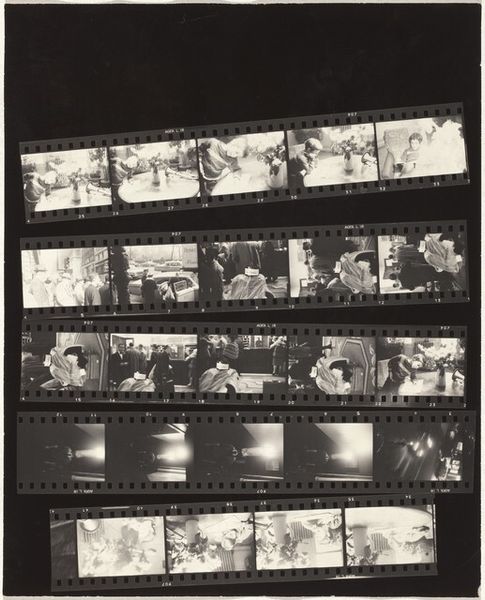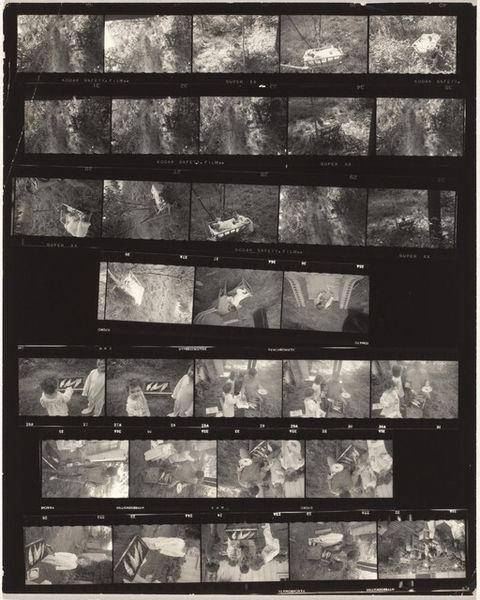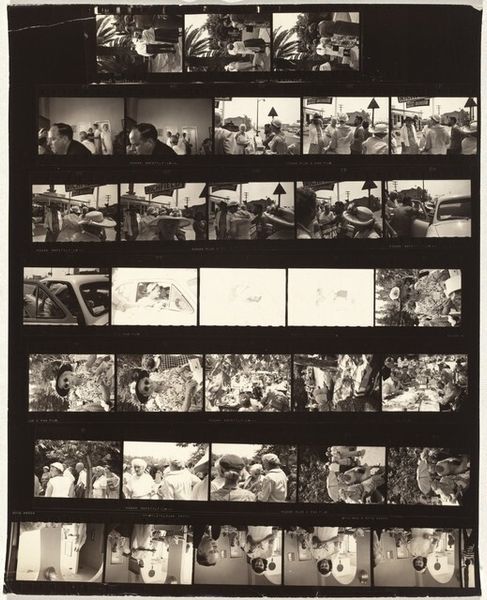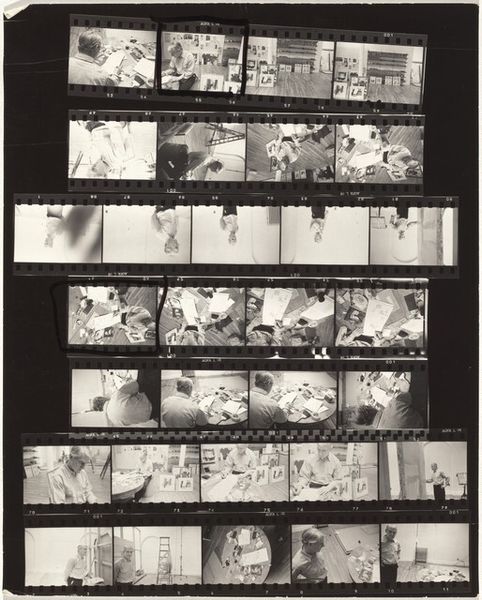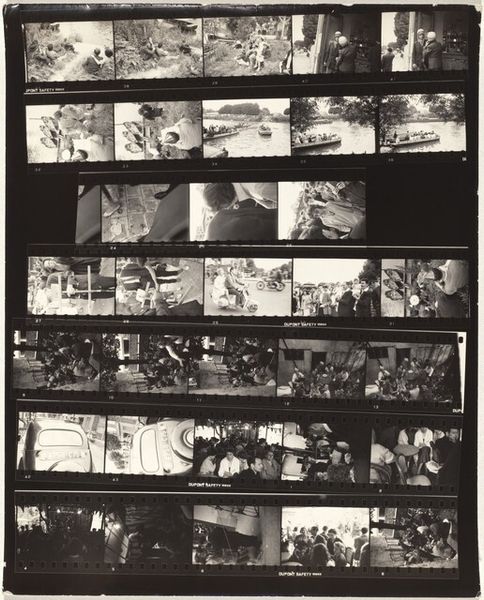
photography, gelatin-silver-print
#
portrait
#
archive photography
#
street-photography
#
photography
#
group-portraits
#
gelatin-silver-print
#
monochrome photography
#
monochrome
Dimensions: overall: 25.2 x 20.2 cm (9 15/16 x 7 15/16 in.)
Copyright: National Gallery of Art: CC0 1.0
Curator: This is "Mombasa and Nairobi--Africa 11" by Robert Frank, a gelatin silver print from 1964. The work documents scenes of everyday life during Frank’s travels in Africa. Editor: Visually, it’s immediately striking—this arrangement of frames, like a contact sheet. It feels very intimate, like peering into a private, unfiltered archive. The grayscale enhances that sense of rawness. Curator: Absolutely. Frank was really interested in capturing life as it unfolded. This selection is significant, the specific frames he chose to include offering glimpses into the culture, class, and perhaps even the American presence. Consider, this work emerges as many African nations achieved independence from colonial powers; this era becomes relevant when decoding the power relations imbedded in these images. Editor: Note the frequent presence of a particular white star, emblazoned within a circle. What are we meant to make of it? It punctuates multiple frames. Is it an intentional formal element designed to anchor the composition, or does its presence represent a larger societal or political concept? Curator: That’s a great question! That visual anchor you observed probably served both purposes, intentionally and subconsciously, for Frank. The symbol evokes corporate branding; it might signify globalism or an imperial emblem, or maybe just a bit of serendipitous framing! What do we make of that visual rhyming Frank used? Editor: Those stark contrasts and the way Frank captured light and shadow certainly enhance that tension. The repetition of subjects -- rows of heads, glimpses of the audience... Curator: Precisely. And we can’t ignore the historical context. This photograph was made around the time many African countries were experiencing postcolonial transition, an experience often backed with neocolonial overtones. Editor: Understanding that moment adds an immense layer of interpretation. The photographs are imbued with social commentary, and this form forces us to make a conscious choice, forcing engagement rather than detached viewing. Curator: Looking closely like this reveals layers of context, it's exciting to see how an unarranged archival snapshot can transform into such a commentary about representation, politics and social narratives. Editor: And the contrast itself elevates those narrative cues. Now I see something of great interest. This certainly is more than just travel documentation, it's Robert Frank, commenting on a society undergoing radical change through composition and the captured image.
Comments
No comments
Be the first to comment and join the conversation on the ultimate creative platform.
